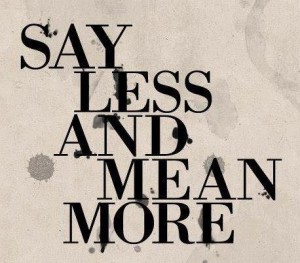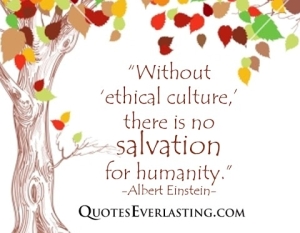We live in a diverse world made up of different ethnicities, religions, traditions, interests and preferences. So, how do we tailor our messaging to appeal to a diverse audience in the business world? Whether communicating globally, or even one localized audience with diverse backgrounds, we have to be cognizant of our audience members. Because of the diversity of our world, it is impossible to please everyone and one size definitely does not fit all. However, there are ways that writers can develop their communications to better appeal to the majority of our diverse audience.
The first thing writers need to understand about communicating cross-globally is the concept of globalization. As Doreen Startke-Meyerring describes it, “Globalization… is the web of contacts, impacts, and connections now engulfing the basic institutions of the world in virtually every dimension of activity: demographic, economic, technological, environmental and political”. Our points of contact with anyone else outside of our background can be considered an aspect of globalization. Globalization goes beyond geographical land. It involves the interconnectedness we have with a diverse group of people all around the world. It also includes an interchange of world views, a sharing of cultural elements, and a social responsibility.
In order to maintain our integrity and credibility, we need to follow some guidelines to ensure that we communicate our messages effectively to our audience. Below are a few tips to keep in mind when writing for diverse audiences. These tips are not exclusive to diverse audiences but are also practical skills that can help writers develop their skills to obtain and maintain their audience’s attentions.
- Use clear, concise language. Because of the diversity of cultural differences, it is important to refrain from making your sentences overly complex. To ensure that people of all different educational and cultural backgrounds understand what we are trying to convey, we must keep our language simple and understandable. The more complex our language is, the more likely we are to lose our audience’s attention. This doesn’t mean we have to oversimplify, but we do need to make sure that our language isn’t ambiguous or overly wordy.
- Incorporate ethical principles. When writing to a culturally diverse audience, it is important to make sure you are providing accurate information and eliminating cultural bias. Whatever your topic is, you need to keep in mind that your audience comes from all different backgrounds and you never want to exclude or disregard someone’s background or viewpoint. According to Stephen J.A. Ward, “A responsible global ethic is needed in a world where news media bring together a plurality of different religions, traditions, and ethnic groups”.
- Avoid cultural specific language. Whenever you are writing for a diverse group of people you never want to use language that references terms or phrases that are specific to a certain culture. For example, if your audience includes Americans as well as Europeans, you would definitely want to avoid baseball references like “hit one out of the park” or “three strikes you’re out”. These references would be understood by your American audience members but the European audience members may not be well versed in American baseball. Not only would the meaning get lost, you will lose your reader.
- Know your audience and do your research. Along the same lines of using culturally specific language, you want to learn as much as you can about your audience members and their culture. What may mean something in your country, may have a completely different meaning in another. This applies also to your own local communities. What may mean something to your organization, for example a logo or a symbol, that same image could mean something completely different to someone of the same culture. Symbols, images, even colors can have different meanings globally and in order to ensure that you aren’t losing your audience, you must do your research before putting your message out there.
- Build the overall communication skills of your organization. We are taught at an early age to speak and write. However, that does not make an expert on communication. We could all benefit from communication training. Even skilled communicators could gain from training to more effectively utilize their skills to appeal to a global audience. According to Deborah Cameron, learning communication skills is not just for individuals who speak English as a second language. She states that “Forms of instruction and training which aim to develop communication skills…are increasingly common in all kinds of contemporary institutions, ranging from elementary schools to multinational corporations”. The practice of building communication skills throughout organizations is becoming common practice and if your organization doesn’t get on board, other organizations will.

![globe [Converted]](https://professionalcommunities.files.wordpress.com/2014/10/globeforweb.jpg?w=150&h=150)





Hi Heather!
Thank you for the fifth blog. You offer some great advice on how to effectively communicate with diverse audiences. I am wondering, though (and maybe I missed it), what is the organization that you’re suggesting the application of your tips? Are you generally speaking?
Your made great image selections, and I especially loved Albert Einstein’s quote.
LikeLike
Heather, your title definitely serves you well as you set up your introduction on global communication and diversity. Also, I love the way you broke the post down in key tips for writers as they approach diverse audiences, and, as you point out, that are useful in general for maintaining the interest and engagement of that audience. Clear, concise language stood out to me especially terms of communicating via media technology – the whole “less is better” philosophy is particularly applicable in emails, and for me as teacher, when sending those emails to parents. While a concern about a student is definitely not the kind of thing that can or should be oversimplified, simplicity is important in keeping the message understandable and preventing what can often be misread for “tone”.
Ethical principles and culturally specific language are equally significant in these kinds of communications, though the latter is more applicable to the “global audience” than, say, communication with a neighbor who may have the same cultural language and might benefit from such connections in a text. This is where your next tip comes into play: know your audience and do your research. Knowing in what ways the prior principles can best be applied stems largely from this understanding – and as you explain, “symbols, images, even colors can have different meanings globally”. And, with regard to your last principle, I had to laugh and think – isn’t that so true, and why we’re here!? Because you’re right – it isn’t just for the “language learner” or children learning the basics. Training in communication is important at all levels and in all fields, as our accessibility to, and participation in, different discourses evolves throughout our lifetimes.
Finally, your images work well in communicating your main points, and your source references were well done, attributing each main idea (and supporting it with applicable theories from the course readings) as you went along, which enhanced the ethos and development of those points. Denise asked a good question I hadn’t thought of though – it does make one wonder for what audience and specific applications these tips are intended, while I did get the feel that it was “in general” since you begin by explaining that these tips are useful for writers in communication anywhere. What a great post, and thank you so much for sharing!
LikeLike
Heather,
Good work on your blog. I love the bullet points and the images. Great use of space here. I also like the quote from Einstein. You bring out some excellent points, but like Denise, I’m wondering about your overall audience intended for this blog. It seems to be very generic, not in the sense of information, it’s all good, but in the sense that it can apply to everyone.
In your fourth blog you spoke directly about animal cruelty; your second blog was focused on the safety videos, I was just wondering if you intended to have this go out as a message to the masses. If you did, that’s great, mission accomplished. 🙂 But, I thought I’d mention it as well, just in case you forgot to add a link you wanted to.
I also like how you combine your discussion to include diversity as well as globalization. The terms are related and very similar, but they are indeed different and you did a nice job of showing us how think of both terms in our writings.
Overall, it’s an excellent end to our blog writing.
I’m sending an email as well with some small tips.
Stacie
LikeLike
Thanks everyone for your feedback. My intended audience is really just a general business audience.
LikeLike
Heather,
I totally got what your audience was. I think you did a great job and I really appreciate learning more about the subject of globalization from your experience.
LikeLike
Dear Heather,
I enjoyed reading your post so much! I especially loved all of your images and how your post follows your own advice, actually! I can relate to the sentence in your introduction about the difficulty of pleasing everyone. Your title is perfect, although I wonder if you added something like “Business writing:” before it to help clarify what type of “sizes” we are about to read about. Or maybe you added some particular tagging elsewhere for outside searching purposes? 🙂
Thank you for your description of globalization. It’s lovely and makes me hear Disney’s “It’s a Small World After All” in my head. It reminds me of a quote I remember hearing and I researched to find that Pearl Bailey said this, “There is only one race, the human race.” How lovely!
Your post is “save-worthy,” something writers can bookmark and refer back to, so thanks for the tips and the good read.
Thanks,
Dawn
P.S. I wish there really were a “research” button,” an then I could press my Staples “That was easy!” button! haha!
LikeLike
Heather,
First off, your blog is inviting and full of life. I see how this blog is for the business/web design/global market audience. However, I think it also allows all people of any ethnic or social group feel warm and welcomed to you words. Furthermore, you speak of how to create productive global discourse with all groups of people. The imagery guides the reader, and the bullet points provide clear direction for the audience. Although the message is for anyone creating global communication, what I find appealing is that your blog is convincing and to the point. I enjoyed reading and gaining knowledge of how I can communicate to a global audience. FYI-I love the cell phone translator. Very effective and well done!
LikeLike